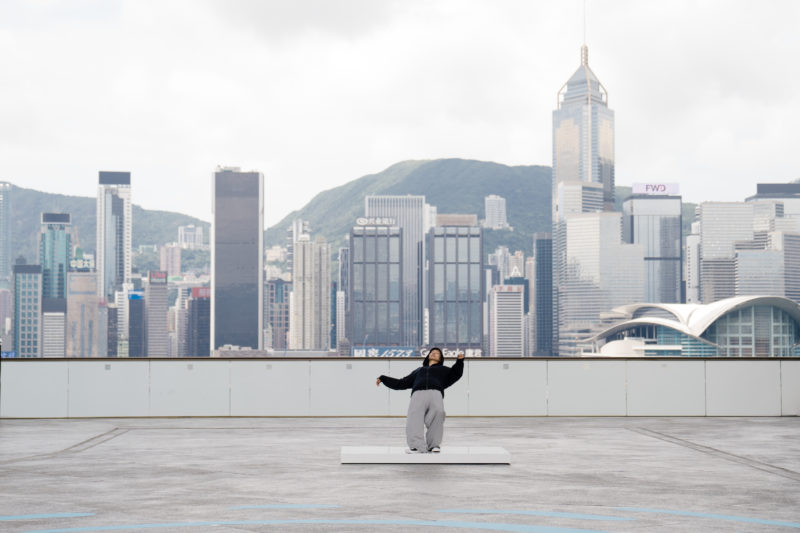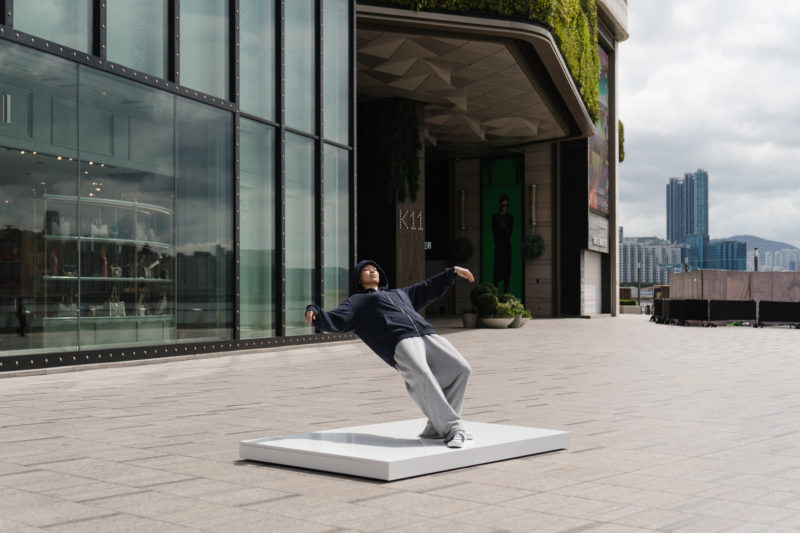
Introduction
Have you ever seen one of those perfectly timed photos that capture the exact moment someone begins to fall on their bum? With modern technology, it is not hard to capture that “perfect moment”. However, capturing that “perfect moment” in a live performance is nearly impossible; unless you are Xu Zhen 1.
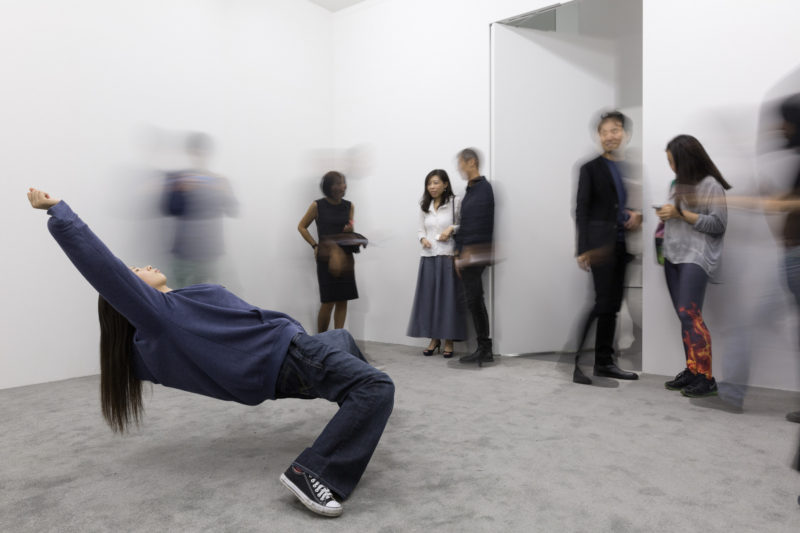
Chinese artist 2 Xu Zhen is known for focusing on that exact moment that we are unlikely to process. He is one of the leading figures among the young generation of Chinese artists, with his work consisting of installation 3, video, performance 4, large-scale sculptures 56 and painting 7. He combines irony and humor in his artworks and offers a critique of the art world and political systems of human exploitation.
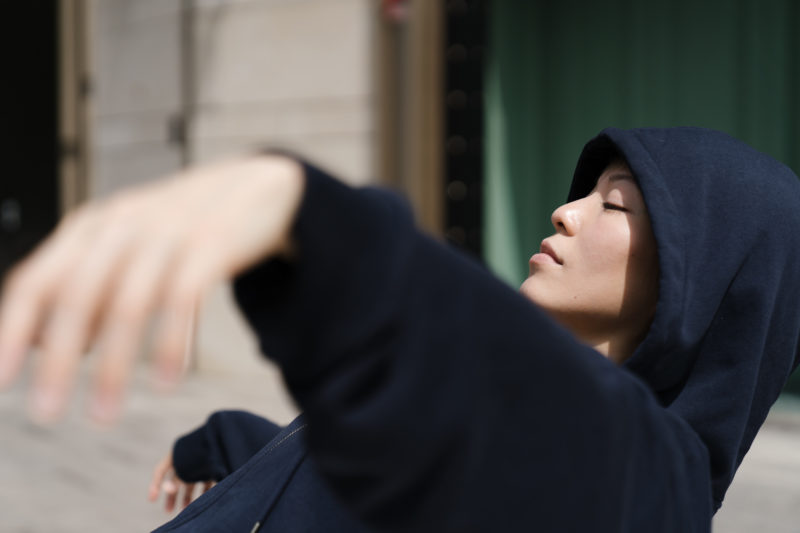
In Just a Blink of an Eye
One of his most peculiar works is In Just a Blink of an Eye, which involves performers lean backward like Keanu Reeves’s bullet-dodging pose in the Matrix as if they are victims of unseen violence. It is like you were standing vertically up and then, within a blink of an eye, you fall down on the ground trying to figure out what just happened.
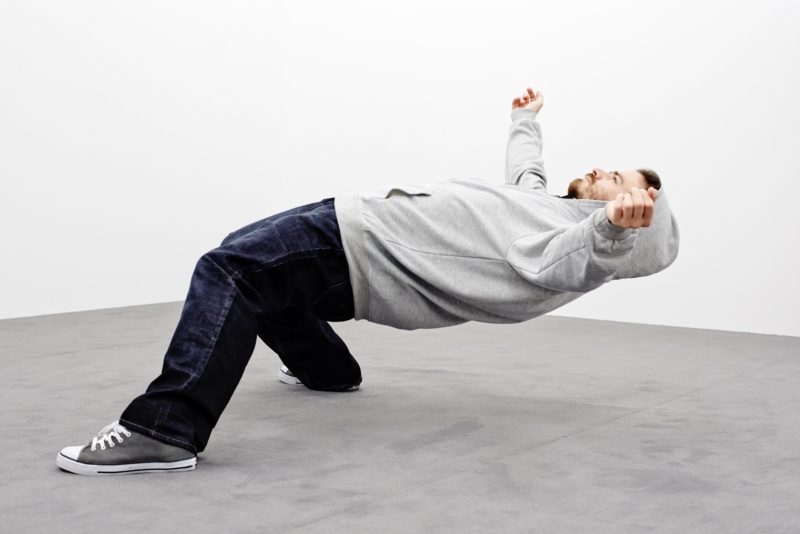
Featured at the Museum of Contemporary Art 8 (MOCA), Los Angeles 9, the performers, not including Zhen, freeze in this pose for up to six hours. They lean backward, almost touching the ground, dangling suspended 10 in the air with their hands spread out, their weight falling completely on one heal while the other foot hoovers faintly above the ground.
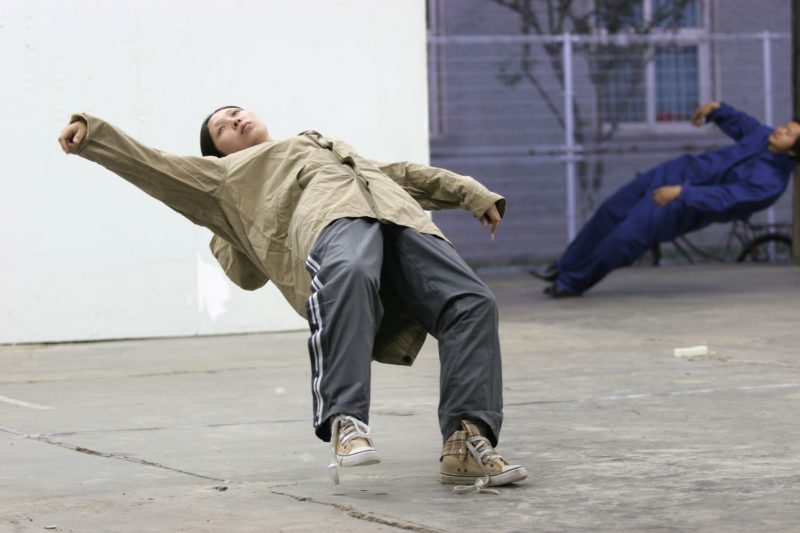
The meaning
This performance was first staged in China in 2005 as a critique of the precarity of the inhumane working conditions in factories across China and the unstable global economy. During that time, the Chinese had revalued the Yuan, a move that made investors very apprehensive. Every party was unsure how this move would impact the labor practices in China and the power of free trade. Was there going to be a crash?
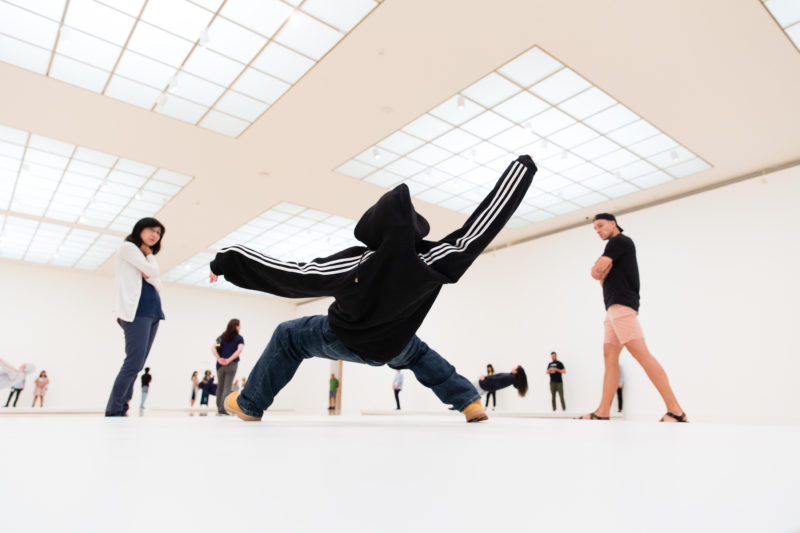
But fast forward to 2019, this performance had a completely different worldview, perhaps the opposite of what was going on in China in 2005. The U.S economy was growing steadily and the unemployment rate was at an all-time low. With that kind of stability, no one is preoccupied with the currency value.
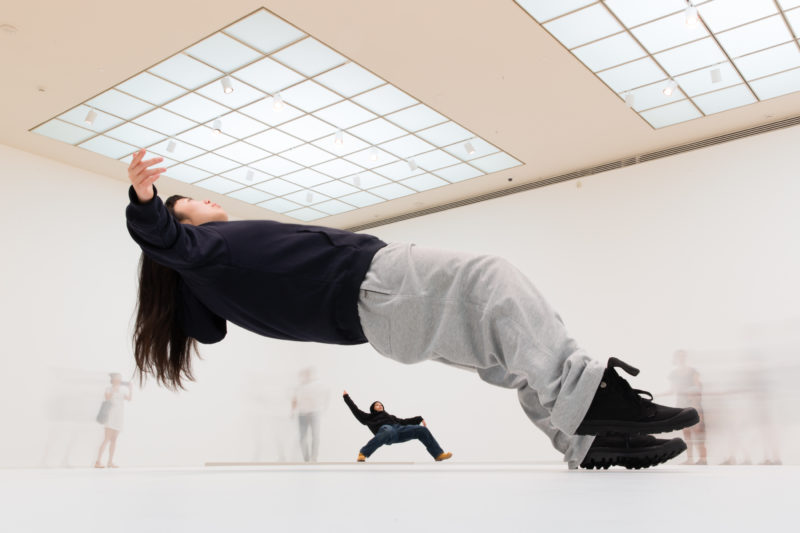
Explaining the meaning behind the performance, Amanda Hunt, the curator of the exhibition at MOCA, said 1112:
The work engages notions of the body as material, and in turn, the materiality of the body, testing the limits of physical and cognitive possibilities as the viewer tries to comprehend what we see. A prolific and experimental artist, Zhen’s conceptually driven practice encompasses a vast range of media and often employs humor, irony, and sophisticated trickery. As the audience waits for movement, for the performer to stand up, or for them to continue to follow the rules of gravity, they instead experience time and stillness as moments extend and are stretched out through these living sculptures. Xu Zhen explores fragility and balance, literally and metaphorically, spatially and temporally.
Museum visitors can take selfies with them or just walk around them, admiring the miracle. Many people ask the museum how the pose is achieved, but the museum has never revealed the trick. But the performance eerily forces the audience to question the rules of physics. It is about the human form and materiality of the body, and it is something of a meditation on stillness and fluidity of time, among other things.

How does it work?
The floating illusions created by the performers of In Just a Blink of an Eye are accomplished through the strategic placement of steel plates and rods. So, while they seem to defy the laws of physics, the structure on which they rest is usually extraordinarily stable and features three parts that are pretty much invisible.
The three parts include the seat, the shaft, and the plate. There is also a rug to cover up the plate and the performers would always require baggy or long sleeves clothing to hide the shaft.
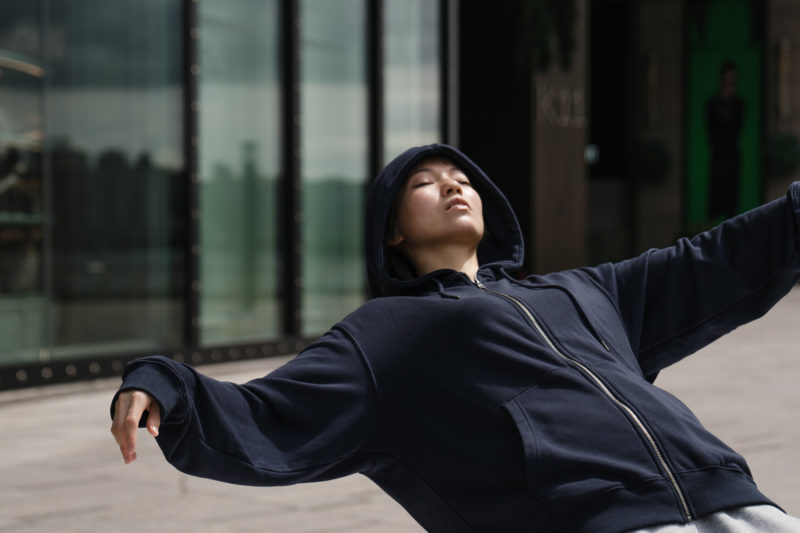
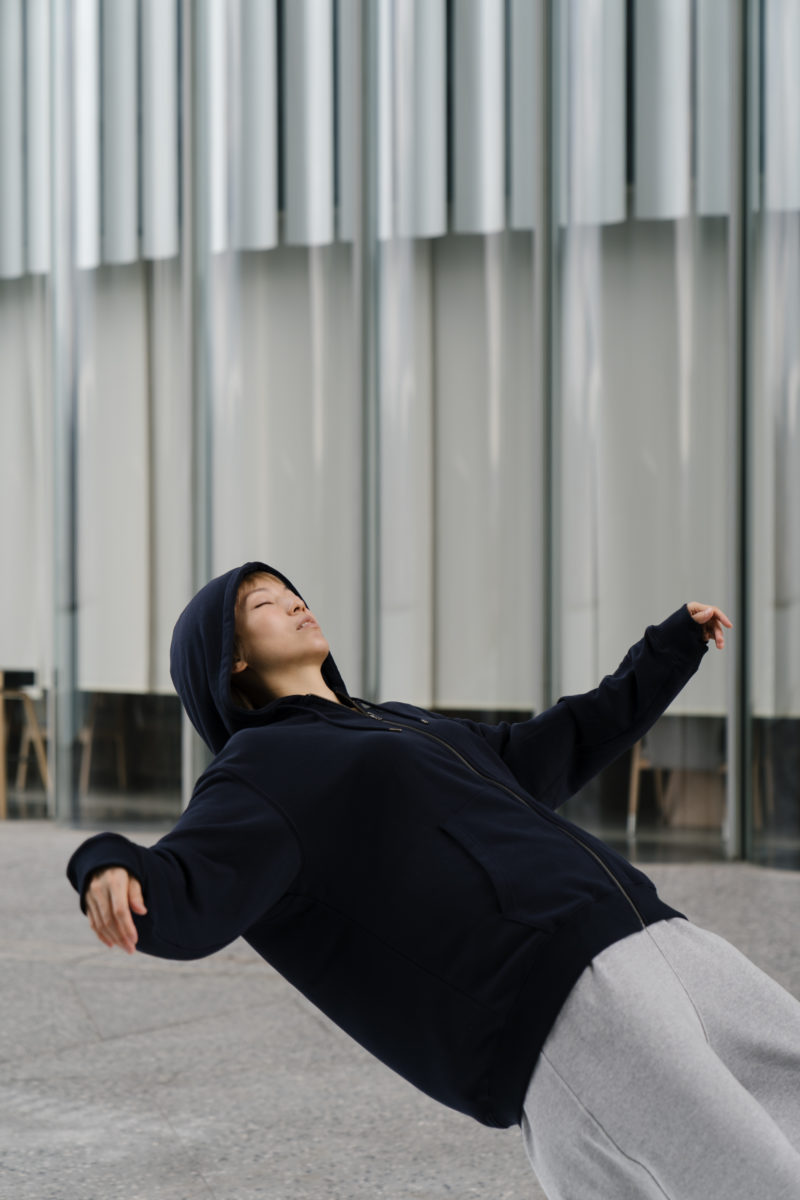
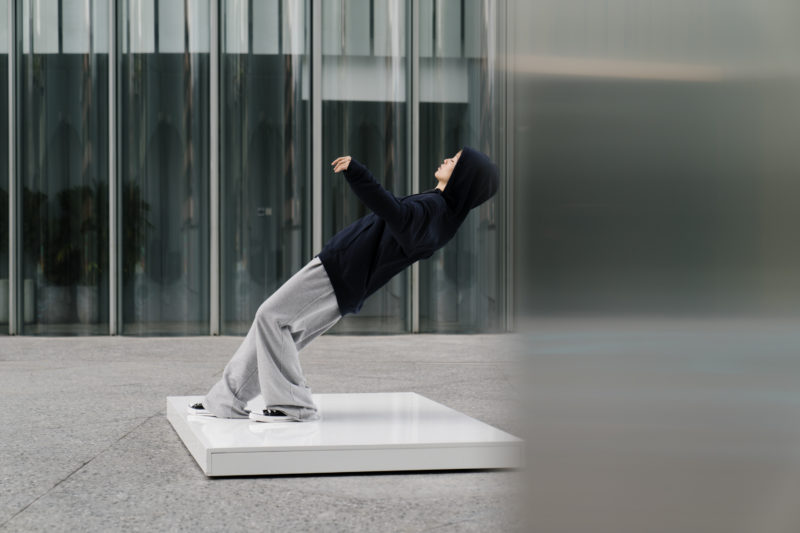
But when Xu Zhen was asked how he created the work, he offered an enigmatic response that is just as mysterious as the poses. He told The National newspaper 1314:
Blankness is the nature of time. Despite the fact that the performers are actually supported by steel structures, it is their stillness that induces an expectation in the viewers. We hold our breath for a tremble of a collapse and thus, in the process, become part of the performance. The impressions left by the performance are also frozen in the viewer’s heads.
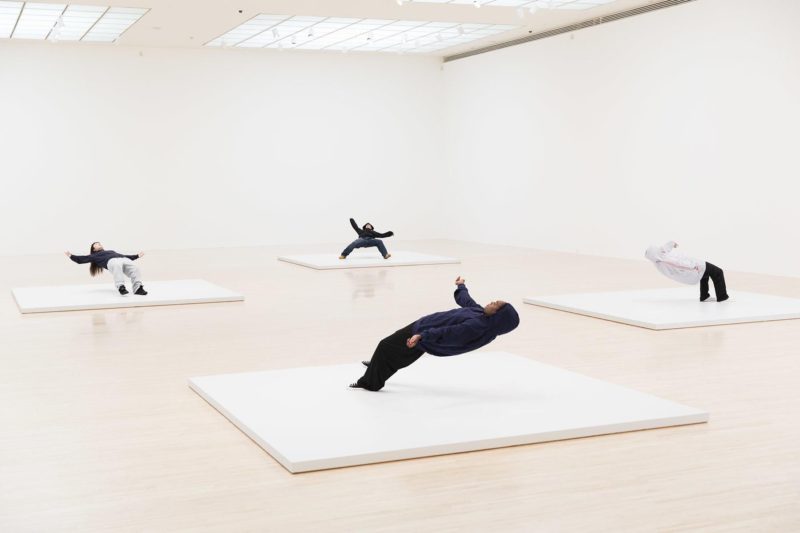
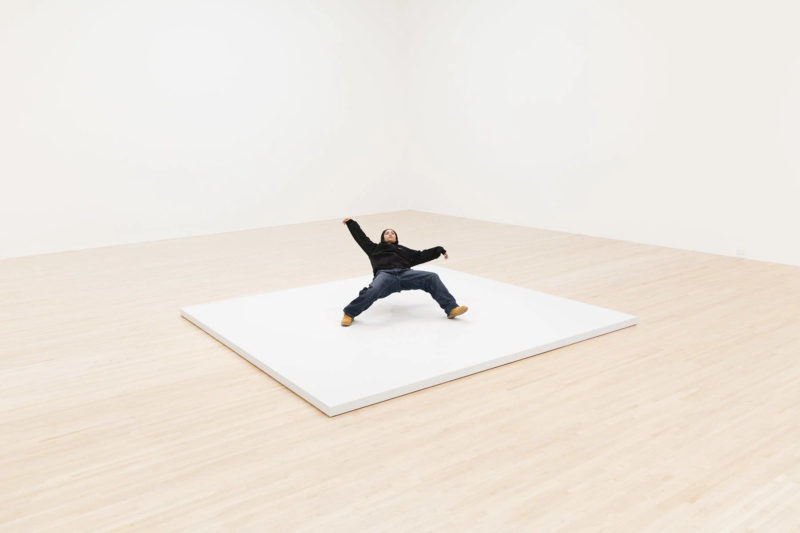
Deeper meaning & questions
Beyond the obvious questions regarding how the performance is developed, there are deeper, intriguing questions about the nature of constructed realities. We are fully aware of what we can observe, yet we are detached from the performers’ experience, for whom time is stretched as their bodies become material.
The performers are inert and their poses present an unstable state, which begs the question, how does it feel to be in that state of limbo?
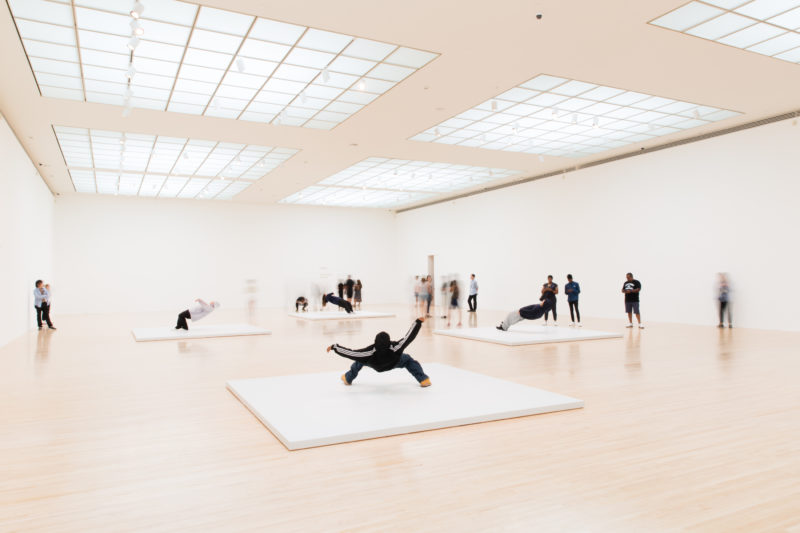
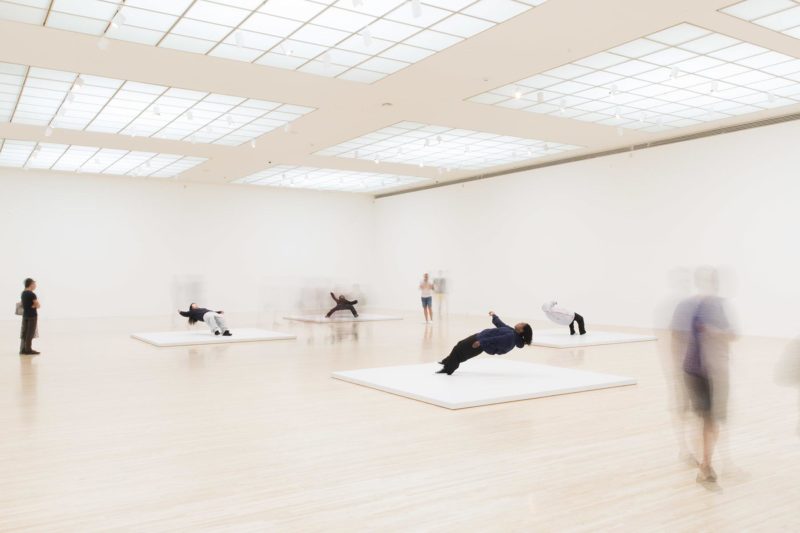
Apart from that, the exhibit also sparks a series of other questions such as, is this really a performance piece? Can it be considered sculptures?
Performance art is also known as live art. It entails a performance presented in front of a live audience that can be unscripted or scripted, carefully orchestrated, random, spontaneous, or planned with or without an audience. It can also, in some cases, take form via media with or without the performer.
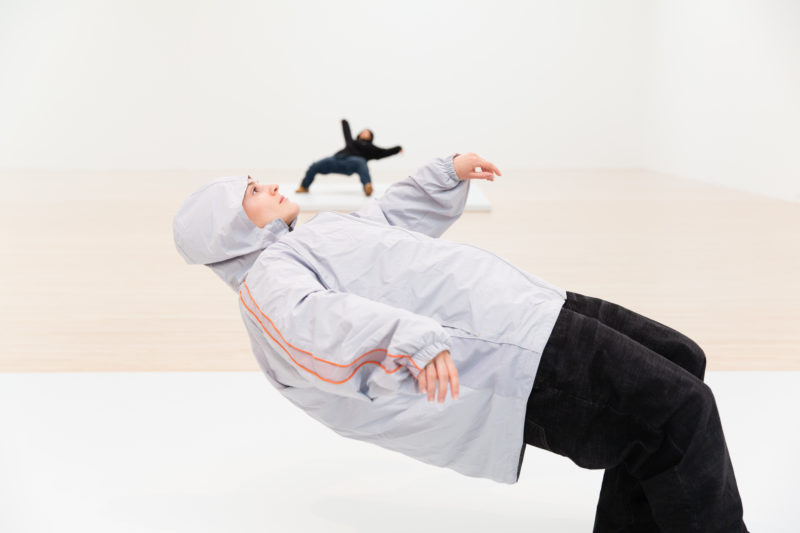
With In Just a Blink of an Eye, performers are frozen in mid-action. They are restricted from all forms of movements except blinking. Thus, it can be categorized as live art, but the stillness of the performers also raises another question: when does the ‘performance’ aspect of the exhibit kick in? And since each performer is suspended and frozen in time, can we call them ‘sculptures’?
Since they are in the still posture, they surely take on the visual characteristics of sculptures, but when they blink, they are live performances.
